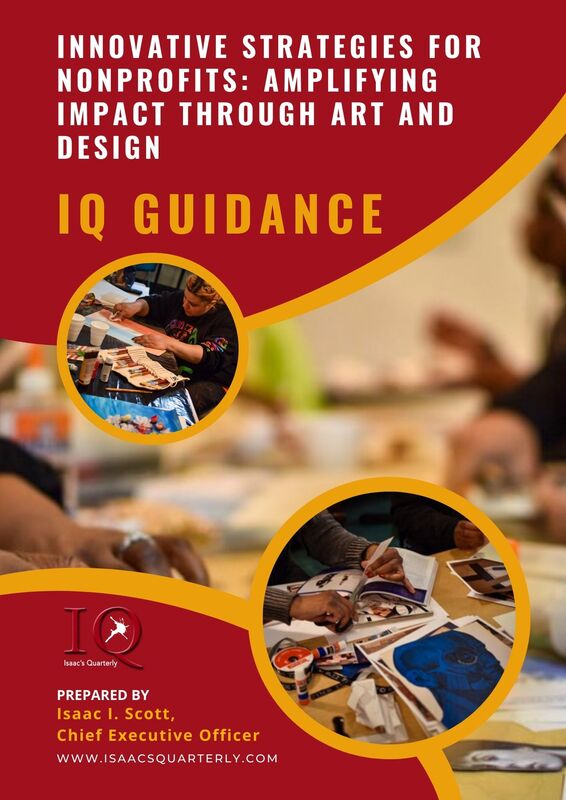|
Innovative Strategies for Nonprofits - Amplifying Impact through Art and Design
Introduction In the dynamic landscape of nonprofit work, the integration of art and design stands as an innovative approach to amplify impact. This white paper, specifically tailored for nonprofit organizations, explores how strategic incorporation of art and design can enhance outreach, engagement, and overall effectiveness. By providing case studies and actionable tips, this resource aims to empower nonprofits to leverage visual elements for greater success. The Impact of Art and Design in Nonprofit Initiatives Art and design play a transformative role in nonprofit initiatives, fostering creativity and enhancing communication. The Stanford Social Innovation Review highlights the significance of incorporating design thinking in nonprofit strategy development (Stanford Social Innovation Review, 2021). Integrating visual elements elevates the visibility and resonance of nonprofit campaigns. Strategies for Leveraging Art and Design in Nonprofit Work 1. Visual Storytelling: Embrace the power of visual storytelling to convey the mission and impact of the nonprofit. The Nonprofit Quarterly provides insights into the effectiveness of visual storytelling in nonprofit communication (Nonprofit Quarterly, 2019). 2. Branding for Impact: Develop a cohesive and impactful visual identity to strengthen the nonprofit's brand. The Harvard Business Review explores the role of branding in nonprofit success (Harvard Business Review, 2020). 3. Interactive Campaigns: Implement interactive visual campaigns to engage the audience actively. The Case Foundation offers a guide on creating successful interactive campaigns for nonprofits (Case Foundation, 2018). Case Studies: Successful Integration of Art and Design in Nonprofits 1. Charity: Water's Visual Annual Reports: Explored in Fast Company, Charity: Water's innovative use of visual annual reports demonstrates how infusing design into traditional reporting can captivate donors and stakeholders (Fast Company, 2016). 2. Amnesty International's Art for Rights Campaign: Featured in Adweek, Amnesty International's Art for Rights campaign showcases the impact of leveraging art for human rights advocacy, engaging a global audience through powerful visuals (Adweek, 2018). Resources for Nonprofits to Enhance Art and Design Initiatives 1. Stanford Social Innovation Review - Design Thinking in Nonprofit Strategy: Insights into the significance of incorporating design thinking in nonprofit strategy development (Stanford Social Innovation Review, 2021). 2. Nonprofit Quarterly - Visual Storytelling in Nonprofit Communication:The effectiveness of visual storytelling in nonprofit communication (Nonprofit Quarterly, 2019). 3. Harvard Business Review - Role of Branding in Nonprofit Success: Exploration of the role of branding in the success of nonprofit organizations (Harvard Business Review, 2020). 4. Case Foundation - Creating Successful Interactive Campaigns: A guide on creating successful interactive campaigns for nonprofits (Case Foundation, 2018). Conclusion: Empowering Nonprofits through Art and Design Art and design offer nonprofits a creative edge in making a lasting impact. By strategically incorporating visual elements, nonprofits can elevate their outreach, engage stakeholders effectively, and achieve greater success in fulfilling their mission. References Case Foundation. (2018). Creating successful interactive campaigns. Fast Company. (2016). Charity: Water's visual annual reports. Adweek. (2018). Amnesty International's Art for Rights campaign. Harvard Business Review. (2020). The role of branding in nonprofit success. Nonprofit Quarterly. (2019). Visual storytelling in nonprofit communication. Stanford Social Innovation Review. (2021). Design thinking in nonprofit strategy. The information provided herein has been compiled based on Isaac Scott's 10 years of art and criminal legal advocacy. While efforts have been made to ensure accuracy, some references from online sources may be unpublished, and certain materials may require subscriptions for full access. Users are encouraged to use the provided references as a starting point and are further encouraged to conduct independent research to verify and expand upon the topics presented. The content is for informational purposes only and should not be construed as legal advice. Readers should consult with qualified professionals for advice on specific legal matters.
0 Comments
Leave a Reply. |

CHIEF EDITOR
ISAAC I. SCOTT,
Five-time Change Agent Award winner, Multimedia Visual Artist, Journalist, and Independent Consultant. Categories
All
Archives |
|
© 2020 Isaac's Quarterly LLC. The images, pictures, and videos on this website are copyrighted and may not be downloaded or reproduced. These materials may be used only for Educational Purposes. They include extracts of copyright works copied under copyright licences. You may not copy or distribute any part of this material to any other person. Where the material is provided to you in electronic format you may download or print from it for your own use, but not for redistribution. You may not download or make a further copy for any other purpose. Failure to comply with the terms of this warning may expose you to legal action for copyright infringement and/or disciplinary action by Isaac's Quarterly LLC.
|
|
|
Follow Isaac's Quarterly on Social Media
|

 RSS Feed
RSS Feed
